Mary Anne Yarde's Blog: The Coffee Pot Book Club , page 168
October 14, 2018
#BookReview — War King by Eric Schumacher #Viking #HistoricalFiction @DarkAgeScribe
 War KingHakon’s Saga Book 3By Eric Schumacher
War KingHakon’s Saga Book 3By Eric Schumacher
It is 954 A.D. and a tempest is brewing in the North. Twenty summers before, Hakon Haraldsson wrested Norway’s throne from his murderous brother, Erik Bloodaxe, but he failed to rid himself of Erik’s family. Now the sons of Erik have come to reclaim Erik’s former throne and avenge the wrong done to their father and their kin. But they do not come alone. With them marches an army of sword-Danes sent by the Danish King, Harald Bluetooth, whose desire to expand his realm is as powerful as the lust for vengeance that pulses in the veins of Erik’s brood. Like storm-driven waves, the opposing forces collide in War King; and when they do, Hakon is left with no choice but to face the tempest and resist.

Hakon Haraldsson has had enough of war and death. But, for this Christian King, an act of compassion could lead to his downfall. For the sons of his brother, Erik Bloodaxe, seek revenge and the throne that Hakon won. This time, the sons of Bloodaxe would not come alone.
War King — Hakon’s Saga Book 3 by Eric Schumacher is the dramatic conclusion to what has been the most fabulous series. Filled with complicated political intrigue, questionable allegiances and vivid battle scenes, this story, and indeed this series, would be a real treat for readers who have enjoyed Michael Hirst’s fabulous Vikings.
There is a wonderful authenticity to this story. From the historical setting to the characters themselves, there is a strong sense of realism. Hakon is not an old man in this story, but the years of countless battles have taken a toll on his health, not only physically but in a sense mentally as well. He has had enough of all the killing. He is very human in the telling.
This book left me in tears on several occasions, due to the terrible things that happen to Hakon. I am not going to give away any spoilers, but before one battle, Hakon has to make a terrible life or death choice. It was truly heartbreaking.
The story, as with all the books in the Hakon series, was well paced, and really drew me into the Viking world in which it is set. This isn’t just a book where there is one battle after another. There are softer, quieter moments, which complements the wars and the violence. I think this is a fabulous portray of Hakon Haraldsson and his life. Mr Schumacher has obviously spent many hours researching this fascinating man and the way of life during this era. Kudos, Mr Schumacher.
There is a useful Glossary of Viking words, tribes and Gods at the beginning of the book, but so engrossed was I with the story, that I did not once look at it! The Historical Notes at the back of the book was very interesting, and I am now more intrigued than ever by the wonderful, yet complex, Hakon Haraldsson.
War King — Hakon’s Saga Book 3 is a masterpiece of well-executed historical fiction.
I Highly Recommend.
Review by Mary Anne Yarde
The Coffee Pot Book Club.
Amazon UK • Amazon US
More information on Eric and his Hakon Sagas can be found on his website. You can also connect with Eric on Twitter, Facebook, Goodreads, and AuthorsDB.
Published on October 14, 2018 23:00
October 12, 2018
The Battle of Hastings by The Ancient History Guy #BattleOfHastings #History @ancient_guy
Today’s special guest on Myths, Legends, Books & Coffee Pots is…
The Ancient History Guy
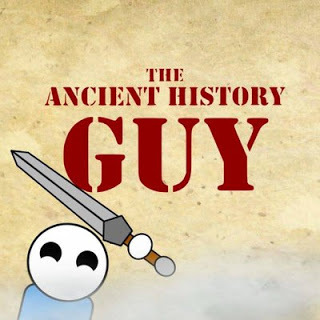
The Ancient History Guy is a youtube channel dedicated to making History fun and interesting via animation. Here we have created a format that can both be used for teachers, homeschoolers, and the casual viewer who wants to learn a bit about history! New videos every Monday!
The Battle Of Hastings 14th October 1066
Following the English victory at Stamford Bridge, Harold Godwinson almost immediately had to turn around and fight another claimant to the English throne, William Duke of Normandy, the following battle of Hastings would decide the future of England.
New Videos every Monday

Published on October 12, 2018 23:00
October 11, 2018
#Giveaway — The Laird’s Christmas Kiss by Anna Campbell #historicalromance #Regency #mustread @AnnaCampbelloz
Inspiration Behind The Laird’s Christmas Kiss By Anna Campbell
 It’s so great to be back on Myths, Legends, Books & Coffee Pots today. Thanks to Mary Anne for inviting me here to talk about some of the inspiration behind my Christmas novella, The Laird’s Christmas Kiss, book 2 of my Lairds Most Likely series, which launched last July with The Laird’s Willful Lass. The setting for this new story is once again Achnasheen Castle on the west coast of Scotland, with its spectacular views across to the Isle of Skye. Fergus and Marina, the hero and heroine of The Laird’s Willful Lass, are hosting their first Christmas house party for friends and family. The guests include Fergus’s roguish cousin, Brody Girvan, Laird of Invermackie, and Hamish’s bluestocking sister, Elspeth Douglas, who has been madly in love with Brody since she was fifteen, although she’s well aware that he doesn’t know she’s alive.
It’s so great to be back on Myths, Legends, Books & Coffee Pots today. Thanks to Mary Anne for inviting me here to talk about some of the inspiration behind my Christmas novella, The Laird’s Christmas Kiss, book 2 of my Lairds Most Likely series, which launched last July with The Laird’s Willful Lass. The setting for this new story is once again Achnasheen Castle on the west coast of Scotland, with its spectacular views across to the Isle of Skye. Fergus and Marina, the hero and heroine of The Laird’s Willful Lass, are hosting their first Christmas house party for friends and family. The guests include Fergus’s roguish cousin, Brody Girvan, Laird of Invermackie, and Hamish’s bluestocking sister, Elspeth Douglas, who has been madly in love with Brody since she was fifteen, although she’s well aware that he doesn’t know she’s alive. 
This romantic story incorporates fairytale elements from Cinderella and the Ugly Duckling. The first book in the series bristled with sexual tension and the push and pull between the lead characters. The next full-length story, The Laird’s Lost Lady, out early in 2019, is a dark and dramatic tale about a runaway bride.So I wanted this Christmas novella to act like a sorbet between two substantial courses, something light and sweet to suit the season of goodwill and add a touch of comedy to proceedings. Readers can revisit characters who appeared in the first book. It’s a chance to check in with Fergus and his artist bride, and also find out a bit more about Diarmid Mactavish and Hamish Douglas, the heroes of future entries in the series.While this is the eighth Christmas story I’ve written (clearly I enjoy doing them!), I’ve never before set a seasonal novella in Scotland. This is a little strange, as Scottish heroes feature in The Winter Wife, His Christmas Cinderella, Her Christmas Earl, and A Pirate for Christmas. One of the problems I ran into with this current story is that mistletoe is rare north of the border. As you can imagine, kissing under the mistletoe makes for a lot of fun in a Yuletide historical romance, and it’s something readers look forward to finding when they pick up a seasonal love story. And while mistletoe features in Norse mythology, and the west coast of Scotland has a long Viking history, most of the references I found said that the modern folklore about mistletoe originates from the other side of the border. Which makes sense, given mistletoe is a parasitic plant common in the Midlands and further south.

What was a resourceful historical romance writer to do? Manage without her mistletoe? Never! Luckily, in Marina Mackinnon née Lucchetti, I had a half-English hostess for the high jinks at Achnasheen. While she was brought up in Florence, her late mother was English, so I thought it highly likely that mistletoe featured in family Christmas celebrations in Italy. (It’s suddenly occurred to me that this series, while set in Scotland, is actually quite international!) Cue Marina’s father arriving with his new bride Julia and bringing as his gift a crate full of mistletoe imported from the land of the Sassenachs. Bravo! My Christmas novella was saved! So if you enjoy a serving of mistletoe kisses with your Christmas cheer, I hope you’ll pick up The Laird’s Christmas Kiss either as a pre-order now, or after it’s released on 27th October! It’s only 99p/99 cents on Kindle!
Amazon UK • Amazon US •
Amazon AU • Kobo • iTunes
Christmas in Australia coincides with our summer holidays – although that doesn’t stop most of us from doing the whole European massive roast dinner thing with plum pudding to follow, or from sending out Christmas cards festooned in snow and holly and robins. Seems odd, I know! But it’s also a great time of year to settle down and watch Christmas movies (usually from the other side of the world and usually featuring snow!). Do you have a favourite Christmas film? I’ve got quite a few, mostly old-school (I love classic cinema). They include Christmas in Connecticut, An Affair to Remember, and The Shop Around the Corner. Not a Scots hero in any of them! There’s a Kindle download of my new novella, The Laird’s Christmas Kiss, up for grabs today to someone who comments. No geographical restrictions. Good luck!
Giveaway
Do you have a favourite Christmas film? I’ve got quite a few, mostly old-school (I love classic cinema). They include Christmas in Connecticut, An Affair to Remember, and The Shop Around the Corner. Not a Scots hero in any of them! There’s a Kindle download of my new novella, The Laird’s Christmas Kiss, up for grabs today to someone who comments. No geographical restrictions. Good luck! Giveaway Rules• Leave your answer in the comments at the bottom of this post.• Giveaway ends at 11:59pm BST on October 31st.You must be 18 or older to enter. • Giveaway is open INTERNATIONALLY. •Only one entry per household. • All giveaway entrants agree to be honest and not cheat the systems; any suspect of fraud is decided upon by blog/site owner and the sponsor, and entrants may be disqualified at our discretion.•Winners will be announced in the comments. • Winner has 48 hours to claim prize or new winner is chosen.
The Laird’s Christmas Kiss:A Lairds Most Likely Christmas Novella
 Down with love!
Down with love!
Ever since she was fifteen, shy wallflower Elspeth Douglas has pined in vain for the attentions of dashing Brody Girvan, Laird of Invermackie. But the rakish Highlander doesn’t even know she’s alive. Now she’s twenty, she realizes that she’ll never be happy until she stops loving her brother’s handsome friend. When family and friends gather at Achnasheen Castle for Christmas, she intends to show the world that’s she’s all grown up, and grown out of silly crushes on gorgeous Scotsmen. So take that, my gallant laddie!
Girls just want to have fun…
Except it turns out that Brody isn’t singing from the same Christmas carol sheet. Elspeth decides she’s not interested in him anymore, just as he decides he’s very interested indeed. In fact, now he looks more closely, his friend Hamish’s sister is pretty and funny and forthright – and just the lassie to share his Highland estate. Convincing his little wren of his romantic intentions is difficult enough, even before she undergoes a makeover and becomes the belle of Achnasheen. For once in his life, dissolute Brody is burdened with honorable intentions, while the lady he pursues is set on flirtation with no strings attached.
Deck the halls with mistletoe!
With interfering friends and a crate of imported mistletoe thrown into the mix, the stage is set for a house party rife with secrets, clandestine kisses, misunderstandings, heartache, scandal, and love triumphant.Amazon UK • Amazon US • Amazon AU • Kobo• iTunes

Anna Campbell
 Australian Anna Campbell has written 10 multi award-winning historical romances for Grand Central Publishing and Avon HarperCollins, and 20 bestselling independently published novellas. She’s also written 2 full-length independently published novels, Lord Garson’s Bride, the last instalment in her bestselling Dashing Widows series, and The Laird’s Willful Lass, the first book in The Lairds Most Likely. Look out for her novella, The Laird’s Christmas Kiss, in late October, the second story in this new Scottish-set series. Anna loves to hear from readers, you can find her: Website • Facebook • Twitter.
Australian Anna Campbell has written 10 multi award-winning historical romances for Grand Central Publishing and Avon HarperCollins, and 20 bestselling independently published novellas. She’s also written 2 full-length independently published novels, Lord Garson’s Bride, the last instalment in her bestselling Dashing Widows series, and The Laird’s Willful Lass, the first book in The Lairds Most Likely. Look out for her novella, The Laird’s Christmas Kiss, in late October, the second story in this new Scottish-set series. Anna loves to hear from readers, you can find her: Website • Facebook • Twitter.
Published on October 11, 2018 23:00
October 10, 2018
Espionage in Early History by Kieran Higgins #History #Spies @kieran__higgins
Espionage in Early History By Kieran Higgins

Like a lot of Arthurian books that make an attempt at realism (as much as one can with the story of King Arthur), my first book The Forgotten Sister looks at what it really meant to have power in a historical setting. Simply being born to it or having a magic sword is not enough. For the kings, queens and knights of my Britain, gold, fighting men and natural resources are what will get you into power and keep you there.
The Forbidden Sister, the companion novel to The Forgotten Sister, tells the story of Morgause, Arthur’s half-sister who is fated to bear the child Mordred with him, the boy who will eventually bring down Camelot.
When she is married off to King Lot, he introduces her to two different types of power. One is foreign trading. According to archaeological evidence, sub-Roman Britain traded with countries as distant as Turkey, enjoying rich furnishings and a varied diet as a result.
But any king with a boat can be a successful trader, funding expeditions and charging taxes on any goods that pass through their lands. Lot’s real power lies in information. As he himself says, it is all about “obtaining it, disseminating it, or choosing not to.” Despite his tiny, distant, kingdom, he rises to become one of the most powerful men in Britain through espionage.
Many people think of spying as relatively modern invention, something that came about with the Second World War and grew into the intrigues of agencies like the CIA, the KGB and MI6. Yet it is as old as the concept of lying and telling tales.
Sun Tzu’s Art of War (written between 771 and 476 BC) has a whole chapter devoted to this topic, in which he states “what enables the wise sovereign and the good general to strike and conquer, and achieve things beyond the reach of ordinary men, is foreknowledge” and that this is only obtained from men. He even classifies spies into different categories, including local people who will report on activities in their area, spies of the enemy who can be turned to your side and spies who can be convinced to give false reports to draw out the enemy. The modern agent would now refer to these as informants, double agents, and dangles respectively.
Ancient Egyptians dealt extensively in secret communiqués, and were some of the first creators of invisible inks and secret compartments in which to conceal their messages. They were well versed in the use of poisons made from herbs and snake venoms, using them to assassinate their enemies by sending them fatal gifts.
There no historical evidence to suggest a British network like Lot operates in The Forbidden Sister, but if the rulers learnt anything from their Roman overlords, it would make sense. The Romans had a highly developed network that spanned the length of the Empire, concealed within the official position known as Frumentarii.
To most people, the Frumentarii were wheat-collectors, gathering and transporting the wheat that the Empire’s citizens paid in tribute to Rome. The Emperor Hadrian transformed them into an organisation to rival the reach of any modern spy agency. As they travelled between far-flung outposts, they made contact with other officials, Roman citizens and disgruntled natives. They returned to the Emperor with knowledge of local geography, defences, troop sizes and siege resources. Hadrian spied on friends as well as enemies, preventing them from conspiring against him - one of the first examples of counter-intelligence.
 Emperor Hadrian.
Emperor Hadrian.Sir Francis Walsingham brought spying into the modern age. Serving as the Principal Secretary to Elizabeth I, he also oversaw the spider’s web of “Watchers”. His most remarkable action as spymaster was to expose the Babington Plot to assassinate Elizabeth and place her cousin Mary Queen of Scots on the throne. While the displaced Scottish queen was under house arrest, he began a thorough effort to open all her correspondence, leading her to believe that none of it was safe.
 Sir Francis Walsingham
Sir Francis Walsingham He then arranged for a double agent, posing as a member of the would-be rebellion, to introduce a method of communication to Mary, where she coded her letters and placed them inside the watertight stopper of a beer barrel. Mary thought her letters were secure, but Walsingham was really intercepting and decoding them before letting them return to the plotters, their plans foiled before they started. It was through this method that she endorsed the plot against her cousin and this led to the letter that would eventually incriminate her to the point of execution.
Spies would go on to play huge roles in almost all of the battles and conflicts that shaped global politics from then on – the American Revolution, the Napoleonic War, the First World War, right through to ongoing modern conflicts. Think about how often we listen in on conversations, or are tempted to! Spying is very important, and not as new as you might think. In fact, it seems to be one of the oldest professions out there.
The Forbidden Sister
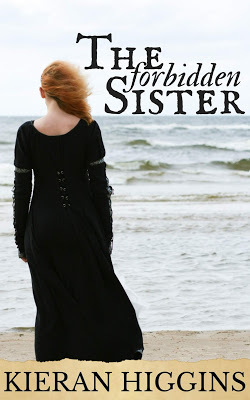 Married off to the island kingdom of Orkney, the Princess Morgause thinks her new kingdom, and new husband, are deathly boring. However, she soon discovers that King Lot trades in more than eastern spices. But as the politics of Britain draw her home to Camelot, Morgause is quickly lured into the intrigues of her sister, the vengeful sorceress Morgan Le Fay. The result is a forbidden love that will change the face of Britain forever, and may spell doom for those she holds dear.
Married off to the island kingdom of Orkney, the Princess Morgause thinks her new kingdom, and new husband, are deathly boring. However, she soon discovers that King Lot trades in more than eastern spices. But as the politics of Britain draw her home to Camelot, Morgause is quickly lured into the intrigues of her sister, the vengeful sorceress Morgan Le Fay. The result is a forbidden love that will change the face of Britain forever, and may spell doom for those she holds dear.A companion novel to The Forgotten Sister, this book is a must for readers wanting more Tales of Camelot from the pen of Kieran Higgins. Though this can be read as a standalone, it is best enjoyed alongside or after The Forgotten Sister.
Amazon
Kieran Higgins
 Kieran is a Belfast-born author. He wrote his first novel at age 5 - he also received his first rejection letter at this age. He has been writing ever since and has produced his debut novel The Forgotten Sister, an Arthurian retelling, in 2016. This was quickly followed by Mists Over Newbroke, a chilling gothic horror novella.
Kieran is a Belfast-born author. He wrote his first novel at age 5 - he also received his first rejection letter at this age. He has been writing ever since and has produced his debut novel The Forgotten Sister, an Arthurian retelling, in 2016. This was quickly followed by Mists Over Newbroke, a chilling gothic horror novella. Inspired by JK Rowling, Garth Nix and Mary Stewart, Kieran writes the type of stories he wants to read - exciting tales full of compelling characters with believable motivations, captivating locations, strong females and, most importantly, magic.
A devoted book lover, Kieran can also be found on Instagram and YouTube, talking about the stories you need to read.
Published on October 10, 2018 23:00
October 9, 2018
King Arthur Slain by Sir Politic Correctnus by Tim Walker #KingArthursBritain #DarkAges @timwalker1666
King Arthur Slain by Sir Politic Correctnus.By Tim Walker
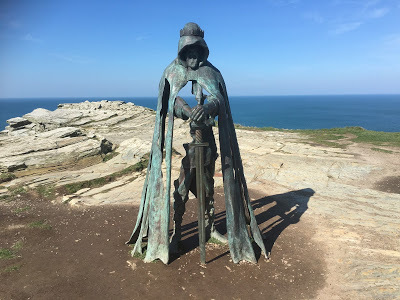
BBC 2’s much heralded documentary, King Arthur’s Britain: The Truth Unearthed , proved to be a bit of a disappointment. The grand reveal was that, well, there probably wasn’t a King Arthur at all and there is little evidence of battles between the Britons and Saxons raging across the Dark Ages.TV historian and archaeologist, Alice Roberts, split her time between a dig at Tintagel in Cornwall, the reputed birthplace of ‘King Arthur’, and a dig site in Yorkshire where much evidence of Germanic-style housing had been unearthed, but no evidence of violent deaths or battle sites.
 Alice Roberts ‚ Wikipedia.Historian Miles Russell was also given a platform to announce the findings of his study of the earliest source of the King Arthur story – Geoffrey of Monmouth’s 1136 epic work, The History of the Kings of Britain. His conclusions are also bad news for Arthur – he never existed! King Arthur, as described by Monmouth, is a composite of earlier kings and heroic events, constructed to fill a gap in his narrative. Hold on a minute – didn’t an earlier writer, Nennius, writing in the ninth century, record the twelve battles of King Arthur? Didn’t Nennius get Arthur’s name from earlier Welsh Chroniclers? There are other mentions of a heroic leader called ‘Arthur’ or ‘Artorius’ which must surely be the echoes of an oral storytelling tradition.For me, the case is not proven. Monmouth may have taken a ‘real’ Dark Ages warrior called Arthur/Artorius and piled the feats of earlier heroes on his shoulders to build him up to superhero proportions. Monmouth’s primary aim, according to Russell, was to lay foundation myths for the British people in a time when the Norman conquest had finally and ruthlessly been bedded in. He was working, allegedly, from a ‘lost manuscript written in the native tongue’. Arthur may well have been mentioned, a real hero remembered through oral tradition. I get the ‘composite’ argument – tales of heroic events by earlier Briton kings and leaders may well have been compressed into one grand story of resistance to the spread of Saxon settlers. You see, in Norman England in the early twelfth century, the Anglo-Saxons had become the bad guys.How likely is it that waves of Germanic tribesmen and their families would have ‘found’ good farming land and settled without any opposition from Britons? It is a fair assumption that post-Roman Britannia would have reverted to earlier tribal lands ruled over by a chief or king. They would surely have wanted to defend their lands from foreign settlers? The Angles, Saxons and Jutes were warrior tribes who would have been more than capable of taking what they want and imposing their will with blade or axe. Just because archaeologists have not found any sites of fifth or sixth century battles or graves of slain warriors, doesn’t mean they are not there, hidden deep underground. Do we ignore the writings of monk Gildas, one of the earliest surviving reliable texts from the mid-sixth century, who lamented the ruin and conquest of post-Roman Britain?
Alice Roberts ‚ Wikipedia.Historian Miles Russell was also given a platform to announce the findings of his study of the earliest source of the King Arthur story – Geoffrey of Monmouth’s 1136 epic work, The History of the Kings of Britain. His conclusions are also bad news for Arthur – he never existed! King Arthur, as described by Monmouth, is a composite of earlier kings and heroic events, constructed to fill a gap in his narrative. Hold on a minute – didn’t an earlier writer, Nennius, writing in the ninth century, record the twelve battles of King Arthur? Didn’t Nennius get Arthur’s name from earlier Welsh Chroniclers? There are other mentions of a heroic leader called ‘Arthur’ or ‘Artorius’ which must surely be the echoes of an oral storytelling tradition.For me, the case is not proven. Monmouth may have taken a ‘real’ Dark Ages warrior called Arthur/Artorius and piled the feats of earlier heroes on his shoulders to build him up to superhero proportions. Monmouth’s primary aim, according to Russell, was to lay foundation myths for the British people in a time when the Norman conquest had finally and ruthlessly been bedded in. He was working, allegedly, from a ‘lost manuscript written in the native tongue’. Arthur may well have been mentioned, a real hero remembered through oral tradition. I get the ‘composite’ argument – tales of heroic events by earlier Briton kings and leaders may well have been compressed into one grand story of resistance to the spread of Saxon settlers. You see, in Norman England in the early twelfth century, the Anglo-Saxons had become the bad guys.How likely is it that waves of Germanic tribesmen and their families would have ‘found’ good farming land and settled without any opposition from Britons? It is a fair assumption that post-Roman Britannia would have reverted to earlier tribal lands ruled over by a chief or king. They would surely have wanted to defend their lands from foreign settlers? The Angles, Saxons and Jutes were warrior tribes who would have been more than capable of taking what they want and imposing their will with blade or axe. Just because archaeologists have not found any sites of fifth or sixth century battles or graves of slain warriors, doesn’t mean they are not there, hidden deep underground. Do we ignore the writings of monk Gildas, one of the earliest surviving reliable texts from the mid-sixth century, who lamented the ruin and conquest of post-Roman Britain?“The townships and high wall are abandoned; once again the citizens are put to flight; once again are scattered with less hope of recovery than usual; once again are pursued by the enemy; once again massacres yet more cruel hastens upon them. The pitiful citizens are torn to pieces by their foes like lambs to butchers.”
Alarming stuff from Gildas, who also mentions frightened people taking to the hills – perhaps a reference to the re-occupation of Iron Age hillforts in the years after the Roman evacuation – something the archaeologists do support. The evidence of massacres and battles may yet be forthcoming, so it’s perhaps a little premature to draw the conclusion that the Anglo-Saxons quietly integrated into the eastern and southern Briton communities without resistance based on one study of a patch of land in Yorkshire. Also, the evidence of continuing trade with Europe and the Mediterranean at Tintagel reflects a micro-economy in the south-west. Sorry Alice, your conclusion of a bloodless colonisation and the assertion that King Arthur, or Arthur ‘Dux Bellorum’, did not exist to lead Briton resistance reflects contemporary themes and smacks of political correctness.I for one don’t think the Britons either fled or submitted to slavery before waves of Germanic tribesmen without some attempt at resistance. The fleeing may have come after the defeat of their warriors. After all, we know it took the Anglo-Saxons over two hundred years to establish their kingdoms across what is now England. The whole truth about what happened in fifth and sixth century Britain is far from having been unearthed. Keep digging!
Tim Walker
 Tim Walker is the author a three-book historical series,
A Light in the Dark Ages
. His particular obsession was to link the end of Roman Britannia to the start of the Arthurian legend, as described by Geoffrey of Monmouth, as a ‘believable’ and possible alt-history. It is researched historical fiction that poses the twin questions, ‘what really happened and who led the Briton resistance?’ Perhaps we shall never know and must make do with the myths, legends and conjecture that fill the black hole in our history.Author's Website.
Tim Walker is the author a three-book historical series,
A Light in the Dark Ages
. His particular obsession was to link the end of Roman Britannia to the start of the Arthurian legend, as described by Geoffrey of Monmouth, as a ‘believable’ and possible alt-history. It is researched historical fiction that poses the twin questions, ‘what really happened and who led the Briton resistance?’ Perhaps we shall never know and must make do with the myths, legends and conjecture that fill the black hole in our history.Author's Website.Book One – Abandoned: Amazon Book Two – Ambrosius: Last of the Romans: AmazonBook Three – Uther’s Destiny: Amazon

Published on October 09, 2018 23:00
October 8, 2018
Longshanks and the Tournament by David Pilling #Medieval #History @RobeH2
Longshanks and the Tournament By David Pilling

King Edward I of England (reigned 1272-1307), nicknamed ‘Longshanks’ after his great height, is remembered these days as the conqueror of Wales and Hammer of the Scots. In his own day Edward was regarded as a patron of chivalry and the knightly arts, and was a keen participant in tournaments.Unlike the later, more decorous jousts, tournaments or tourneys in the 13thcentury were bloody brawls in which two teams of knights fought each other for ransoms and an overall prize. They also served as a training-ground for knights to keep their fighting skills sharp during time of peace.
From Edward’s perspective the tourney was a means of demonstrating his military skills in public, thus enhancing his warlike image and knightly reputation. He made his first appearance in a tourney at Blyth in 1256, aged 17, after begging his father to let him participate. King Henry, never a lover of the sport and anxious for his son’s safety, ordered the knights to wear linen armour and use blunted swords. His well-meaning efforts to limit the bloodshed failed, and the casualties were horrific:
‘Many nobles who endeavoured to gain knightly renown there were unhorsed, beaten, crushed, and trampled underfoot; of whom one was William Longsword, who never afterwards recovered from the effect of his injuries(Matthew Paris).’
William wasn’t the only one to suffer. Paris records that Robert Quincy and John of Lexington were killed, as was Alan de Watson, a royal clerk who had unwisely swapped his quill for a sword. Roger Bigod, the Earl Marshal, was severely injured – ‘seized with a mortal complaint’ – and only with ‘great difficulty rescued from the jaws of death.’ A great many others died of their wounds or condemned never to recover. Edward himself seems to come out of it unscathed: perhaps the other combatants were wary of injuring the heir to the throne.
The chaotic violence of the tourney also appealed to the darker side of Edward’s nature. As a young man he surrounded himself with a band of unruly companions, including his unpopular Lusignan kinsmen. The chronicles report exaggerated tales of the cruelties inflicted by the prince and his men, including one lurid account of Edward ordering the mutilation of a defenceless peasant out of mere spite. His comrades were said to have attacked a priory while Edward was visiting his uncle at Wallingford, driving out the monks and indulging in an orgy of vandalism. .
In a bid to work off his son’s destructive energies – and remove him from the political scene – Henry sent Edward abroad in 1260 to participate on the French tournament circuit. One hostile account claims the prince and his thuggish friends did badly, often being wounded and losing all their gear and horses. A more pro-Edwardian account claimed he ‘gained the victory in the tournament’.Edward doesn’t appearto have suffered any lasting damage. By 8th October he was back in England where he knighted two of the sons of Simon Montfort. In November he went back to France, where he once again entered the lists. In June he was gravely wounded in the melee and considered fortunate to survive.
Edward’s tourney career was postponed for several years, replaced by the serious business of war and politics. In 1267, after peace had finally been re-established, he was able to again devote some of his attention to tournaments. He and his brother, Edmund, and cousin, Henry of Almain, issued an edict lifting the prohibition on tourneys in England, and very probably took part in the great number that were then held.
There is no further record of Edward’s participation until 1274. On his way back from crusade he passed through Savoy and the south of France, where he and his knights were invited to fight in a tourney at Chalon. Edward was invited by the Count of Chalon (Chalon on the Saone in Burgundy Franche-Comté). The treacherous count brought twice as many knights and men-at-arms as the English, and intended to capture or even kill his opponent. The tourney degenerated into a real battle, and in the midst of the fighting the count engaged Edward in combat. When sword-play failed, the Frenchman tried to grip Edward round the neck and drag him from the saddle. Edward reportedly shouted ‘What do you think you are doing? Don’t think you will have my horse!” He then clapped in his spurs and rode forward, tipping his opponent out of the saddle and leaving him sprawled in the dust.
Edward now ordered his infantry to get involved. They immediately rushed into the arena and started to slaughter the Burgundian knights, cutting their saddle girths and killing men on the ground. A great number of French commoners were also slain in the general mayhem. The count tried to rally his men, but was wounded in the hand. Edward refused to accept the Frenchman’s surrender, and instead made him offer it to an ordinary knight. Unsurprisingly, the incident was remembered ever afterwards as ‘The Little Battle of Chalon.’
Chalon was Edward’s last appearance in a tourney. He was now King of England after the death of his father in 1272, and may have felt he could no longer afford to take such risks. Pope Gregory certainly held this view; he wrote letters to the new king begging him not to indulge any longer in these dangerous and harmful sports. God had spared Edward’s life in Syria, said the pontiff, and now Edward must take care of it for the sake of his subjects.
The tournament was inevitably linked with the cult of King Arthur, made famous by Geoffrey of Monmouth’s History of the Kings of Britain, published in the mid-12th century and the bestseller of its day. Edward had a deep interest in the legend, and his literary tastes seem to have been confined to Arthuriana: the Italian romancer, Rusticiana de Pisa, noted that Edward carried a copy of an Arthurian text, Meliadus, when he met the English prince in Italy. As king, Edward is known to have staged a series of ‘Round Table’ tournaments, in which Edward and his knights dressed up as King Arthur and the Knights of the Round Table. One of these theatrical displays was held at Nefyn in Gwynedd in 1284, after the conquest of Wales, another in 1305, on the site of Edward’s victory over the Scots at Falkirk seven years earlier.
Edward’s exploitation of Arthurian imagery, as well as his own martial prowess, inspired praise from contemporaries. The composer of Le Hem, for instance, a poetry account of a tourney held in France in 1285, describes the knights of England as equal to Lancelot, Gawaine and all the Round Table. Best of all was Edward himself, ‘le roi Edouwart’, the greatest and most courteous knight alive. Another French poet, Peire Cardenal, lauded Edward as ‘the best lance in the whole world.’
The Wars Of Edward IThe Leopard 1255 - 74
‘To whom shall the noble Edward be compared? Perhaps he will be rightly called a leopard…’
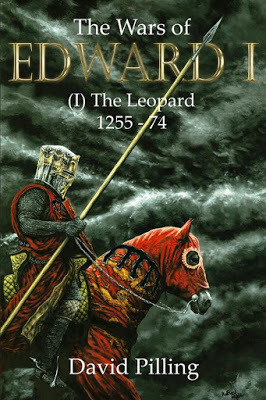 Thus the Song of Lewes, composed by a hostile poet, described Edward I of England, remembered as the conqueror of Wales and Hammer of the Scots. By comparing him to a leopard, the poet praised Edward’s pride and fierceness, but criticised his alleged treachery and falsehood. From his youth Edward divided opinion, and still does to this day.
Thus the Song of Lewes, composed by a hostile poet, described Edward I of England, remembered as the conqueror of Wales and Hammer of the Scots. By comparing him to a leopard, the poet praised Edward’s pride and fierceness, but criticised his alleged treachery and falsehood. From his youth Edward divided opinion, and still does to this day. Few princes had to serve such a tough or prolonged military apprenticeship. Edward’s early difficulties and failures, especially in Wales, forged him into one of the ablest Plantagenet warrior-kings. His alleged inconstancy as a youth saddled him with the reputation of an oath-breaker, and his capture at the Battle of Lewes was a signal humiliation. The spectacular reversal of fortune at Evesham, and swift rise thereafter to commander-in-chief of his father’s armies, proved the making of Edward’s reputation.
Edward owed much of his contemporary fame to his prowess as a general and fighting soldier. This book is the first of a three-part study of his military career, beginning with Edward’s first experience of war as a teenager in the duchy of Gascony, ending in his last doomed march to Scotland, aged sixty-seven. Book One deals with his formative military experiences in Gascony and Wales, the Second Barons’ War and the suppression of the Disinherited, and finally his role in the ill-fated Ninth Crusade.
This is the first non-fiction book by David Pilling, author of the Leader of Battles series, Soldier of Fortune, Caesar’s Sword, Reiver, and many other tales.
The book can be purchased at Amazon US & UK in paperback and ebook formats:
Amazon US • Amazon UK
David Pilling

I’m an English writer and researcher, addicted to history for as long as I can remember. I spent much of my childhood dragging my parents up and down ruined castles in Wales, and the medieval period has always held a particular fascination for me. I am also interested in the Roman period, the Dark Ages and the British Civil Wars of the 17th century.
David loves to hear from readers, you can find him: Blog • Facebook • Twitter.
Published on October 08, 2018 23:00
October 7, 2018
Life in the time of King Aldfrith of Northumbria by Jayne Castel #History #AngloSaxon @JayneCastel
Life in the time of King Aldfrith of Northumbria… By Jayne Castel
My Historical Romance novel LORD OF THE NORTH WIND (release date 10 October 2018) is centered around the real historical figure Aldfrith of Northumbria. He ruled Northumbria from 685–704/705 AD and was known as ‘The Philosopher King’.
Lord of the North Wind(Book #3: The Kingdom of the Northumbria)

A king who has forsaken passion for reason—and the widow who tempts him.
Aldfrith never wanted to be king. The bastard son of King Oswiu of Northumbria, he lives as a scholar upon the remote island of Iona. But his life changes forever the day he discovers his half-brother is dead. Aldfrith is next in line for the throne. Back at the royal fort of Bebbanburg, he begins his new life as ruler of Northumbria. And that includes wedding a suitable queen.
Osana, the wife of one of Aldfrith’s ealdormen, meets the new king at his wedding. Unhappily married, she fights her instant attraction to him. Likewise, Aldfrith is disarmed by Osana's warmth and directness—so unlike his cold bride. A union between Aldfrith and Osana is impossible … yet fate has much in store for them both. When Aldfrith’s marriage fails two years later, and Osana is widowed, they meet once more.
The attraction between them is even stronger than ever, but love and passion are the last things on Aldfrith’s mind. He’s determined never to let lust override good sense and moral judgement … yet with every day he spends with Osana he fights a losing battle. This alluring widow could very well be his undoing.
AMAZON.COM • AMAZON.CO.UK • AMAZON.COM.AU
Jayne Castel
 Award-winning author Jayne Castel writes Historical Romance set in Dark Ages Britain and Scotland, and Epic Fantasy Romance. Her vibrant characters, richly researched historical settings, and action-packed adventure romance transport readers to forgotten times and imaginary worlds.
Award-winning author Jayne Castel writes Historical Romance set in Dark Ages Britain and Scotland, and Epic Fantasy Romance. Her vibrant characters, richly researched historical settings, and action-packed adventure romance transport readers to forgotten times and imaginary worlds.Jayne lives in New Zealand's South Island, although you can frequently find her in Europe and the UK researching her books! When she’s not writing, Jayne is reading (and re-reading) her favorite authors, learning French, cooking Italian, and taking her dog, Juno, for walks.
www.jaynecastel.com
Published on October 07, 2018 23:00
October 5, 2018
#BookReview — Blood and Ink by D. K. Marley #Shakespeare #Marlowe @theRealDKMarley
 Blood and InkBy D. K. Marley
Blood and InkBy D. K. Marley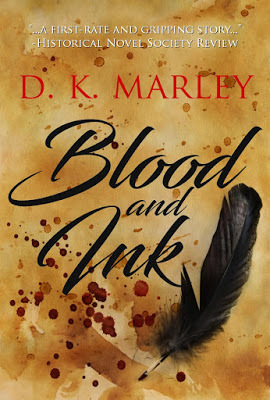
History shows Kit Marlowe died in a tavern brawl in Deptford in 1593, but did he? England is torn apart by religious metamorphosis and espionage. The stages of England and bright intellectual boys are used to bolster Queen Elizabeth I's reign and propagate the rising Protestant faith. At the age of eight, Christopher Marlowe, the muse's darling, is sucked into the labyrinth of secret spy rings, blood, murder, and betrayal, while his own ambition as England's favorite playwright slips further from his grasp.
As Christopher grows to manhood, he sinks further into the darkness, and a chance meeting with an unknown actor from Stratford-upon-Avon, William Shakespeare, sets him on a path of destiny; a fate of forced exile and the revelation that the real enemy is not the assassins of Rome, but a man who stared into his eyes and smiled. One he did not expect

“Life's but a walking shadow, a poor player
That struts and frets his hour upon the stage
And then is heard no more…”Macbeth — Act V, Scene V.By William Shakespeare
When a sparrow falls from the sky, God sees, he knows. Christopher Marlowe was born in humble circumstances, but under the brightest of stars. From a tender age, he saw the world differently from how others saw it. His world was one of poetry and prose, sonnets and blank verse, and with his muse, Calliope,whispering in his ear, his future as a playwright was assured. But then on one ordinary and unassuming day at The King’s School in Cambridge, Kit happened upon a man who would take this would-be-playwright into the dark and dangerous world of espionage and murder.
From lofty heights, did Kit’s ambition grow. However, he soon learned a bitter lesson which was that *Hell hath no limits… and where Hell is there must we ever be.
From the banks of the River Stour to the elegant grandeur of Queen Elizabeth’s court, Blood and Ink by D. K. Marley takes us on an unforgettable journey about one man’s hope for immortality.
What can I say about this book? For the pages speak for themselves. It is the story of not one man, but many. As the players fan out upon the stage, Marlowe, and indeed all the principle historical characters from that time, put on a play for your enjoyment.
For fans of Shakespeare, this book poses an age-old question — did Shakespeare, a skilled player, really write 37 plays and 154 sonnets? This story, says no. This story argues so elegantly on the side of Marlowe, and in such a way, that I, a lifelong lover of Shakespeare, found myself at times swept along with the whole argument! With the language of the bards ringing so gracefully in the words that inked the pages, and the atmospheric setting of a book so well drawn that I was oblivious to everything that was going on around me, this story, this book, is the best I have ever read about this era and these people. I cannot commend D. K. Marley enough for this beautiful story. She has brought Marlowe and Shakespeare back to life in this magnificent retelling.
The dialogue is as rich as a Shakespeare sonnet, the darker moments, as terrible as the Massacre of Paris, and the lighter moments as amusing as anything that William wrote. I adored the interpretation of both Marlowe and Shakespeare. So although this is very much Kit’s story, there would not have been a story without William’s running along side it.
This book asks many questions and D. K. Marley has tried to give plausible answers. And although we will never know if Kit really did die in that dreadful fight in a house in Deptford, or if William really did pen the worlds most beloved plays, this story has something for anyone who is interested in these poets and the world in which they lived in.
If you were to read only one book this year, then let it be this one.
I Highly Recommend.
Review by Mary Anne Yarde.The Coffee Pot Book Club.
*Doctor Faustus by Christopher Marlowe
Amazon • Barnes and NobleAuthor’s Website
D.K. Marley

DK Marley is a historical fiction writer specializing in Shakespearean themes. Her grandmother, an English professor, gave her a volume of Shakespeare's plays when she was eleven, inspiring DK to delve further into the rich Elizabethan language. Eleven years ago she began the research leading to the publication of her first novel "Blood and Ink," an epic tale of lost dreams, spurned love, jealousy and deception in Tudor England as the two men, William Shakespeare and Kit Marlowe, fight for one name and the famous works now known as the Shakespeare Folio.
She is a true Stratfordian (despite the topic of her novel "Blood and Ink"), a Marlowe fan, a member of the Marlowe Society, the Shakespeare Fellowship and a signer of the Declaration of Intent for the Shakespeare Authorship Debate. Her new series titled "The Fractured Shakespeare Series" will tackle adapting each play into a historical fiction novel. She has traveled to England three times for intensive research and debate workshops and is a graduate of the intense training workshop "The Writer's Retreat Workshop" founded by Gary Provost and hosted by Jason Sitzes and Lorin Oberweger. She is also a blogger for her blog "The Jabberwocky Blog" on Wordpress. She lives in Georgia with her husband and two Scottish Terriers named Maggie and Buster.
Connect with D.K. Marley: Author Website • Facebook • Twitter • Instagram: @theRealDKMarley •Amazon Author Page • Goodreads • Jol's Book Club.
<!-- /* Font Definitions */ @font-face {font-family:"MS 明朝"; mso-font-charset:78; mso-generic-font-family:auto; mso-font-pitch:variable; mso-font-signature:-536870145 1791491579 18 0 131231 0;} @font-face {font-family:"Cambria Math"; panose-1:2 4 5 3 5 4 6 3 2 4; mso-font-charset:0; mso-generic-font-family:auto; mso-font-pitch:variable; mso-font-signature:-536870145 1107305727 0 0 415 0;} @font-face {font-family:Cambria; panose-1:2 4 5 3 5 4 6 3 2 4; mso-font-charset:0; mso-generic-font-family:auto; mso-font-pitch:variable; mso-font-signature:-536870145 1073743103 0 0 415 0;} /* Style Definitions */ p.MsoNormal, li.MsoNormal, div.MsoNormal {mso-style-unhide:no; mso-style-qformat:yes; mso-style-parent:""; margin:0cm; margin-bottom:.0001pt; mso-pagination:widow-orphan; font-size:12.0pt; font-family:Cambria; mso-ascii-font-family:Cambria; mso-ascii-theme-font:minor-latin; mso-fareast-font-family:"MS 明朝"; mso-fareast-theme-font:minor-fareast; mso-hansi-font-family:Cambria; mso-hansi-theme-font:minor-latin; mso-bidi-font-family:"Times New Roman"; mso-bidi-theme-font:minor-bidi;} p.MsoHeader, li.MsoHeader, div.MsoHeader {mso-style-priority:99; mso-style-link:"Header Char"; margin:0cm; margin-bottom:.0001pt; mso-pagination:widow-orphan; tab-stops:center 216.0pt right 432.0pt; font-size:12.0pt; font-family:Cambria; mso-ascii-font-family:Cambria; mso-ascii-theme-font:minor-latin; mso-fareast-font-family:"MS 明朝"; mso-fareast-theme-font:minor-fareast; mso-hansi-font-family:Cambria; mso-hansi-theme-font:minor-latin; mso-bidi-font-family:"Times New Roman"; mso-bidi-theme-font:minor-bidi;} span.HeaderChar {mso-style-name:"Header Char"; mso-style-priority:99; mso-style-unhide:no; mso-style-locked:yes; mso-style-link:Header;} .MsoChpDefault {mso-style-type:export-only; mso-default-props:yes; font-family:Cambria; mso-ascii-font-family:Cambria; mso-ascii-theme-font:minor-latin; mso-fareast-font-family:"MS 明朝"; mso-fareast-theme-font:minor-fareast; mso-hansi-font-family:Cambria; mso-hansi-theme-font:minor-latin; mso-bidi-font-family:"Times New Roman"; mso-bidi-theme-font:minor-bidi;} @page WordSection1 {size:595.0pt 842.0pt; margin:72.0pt 90.0pt 72.0pt 90.0pt; mso-header-margin:35.4pt; mso-footer-margin:35.4pt; mso-paper-source:0;} div.WordSection1 {page:WordSection1;} </style><br /><br />
Published on October 05, 2018 23:00
October 4, 2018
Book Spotlight — The Pirate Lord by Vanda Vadas #Historical #Regency #Romance @Vanda_Vadas
The Pirate Lord
By Vanda Vadas

Can love for his beautiful, aristocratic captive rescue Miles from his lust for revenge?
A family tragedy steeped in deceit and betrayal saw Lady Eloise Blakely vow never to fall victim to a man's charms, let alone invite him into her bed. Until fate swept her aboard a pirate's ship and into its captain's embrace.
Yet when he reveals a dark secret, her lover becomes her enemy …
Ten years ago, Miles Zachary Fenton was framed for murder. For so long he has fought to clear his name and reclaim his dukedom. Now, when both appear to be just within reach, he is forced to abduct a meddling beauty, one who wreaks havoc with his emotions and complicates his plans.
Excerpt
Zach came to a sudden stop, catching his breath on great gasps. Up ahead, he saw lit torches where a crowd of men and women had gathered on the sand. Shouts and cheers carried on the breeze.
Fear for Eloise’s safety spurred him on until he broke through the crowd. There she stood, in the centre of the circle with her back to him, rapier in hand, in the throes of duelling one of his best swordsman.
A sudden hush fell over the crowd. Not one of them moved, nor spoke. Eloise’s opponent looked like he was about to meet his death and shrank back into the crowd. All eyes fell on Zach.
Eloise turned towards the source of their distraction. Glazed eyes blinked. Her expression soured. ‘Ah, Captain. To what do we owe the pleasure?’
Sand stuck to her wet clothes, her hair was bedraggled. Implacable green eyes sent him a warning. She looked as fierce as any man who’d dared to take him down. ‘Eloise, I—’
‘Spare me the apol … olgetic look, Captain. I doubt there’s anything you can say to ex … onerate your despicable behaviour.’
She made it sound as though he’d seriously sinned against her. He hadn’t expected a right royal welcome, but this? ‘I was delayed. I wouldn’t call that despicable. I apologise, nonetheless.’ He stared at the tip of her raised sword.‘How could you?’ She hiccupped, and took an unsteady step towards him.
Zach raised a brow. ‘’Tis indeed a good drop, that red.’
‘I’m com … completely unaffected by it.’
Muffled laughter rolled through the crowd. Zach’s glare silenced it.
He held out his hand. ‘Put down the sword, Eloise. Let’s discuss this back at the house. You’re in no state to—’
‘We’ll settle this here. Now! Someone hand the captain a sword.’
‘There’s no need. Come, let’s go,’ he coaxed.
‘I challenge you to a duel, Captain. If I disarm you, then here I stay. If you disarm me, then I’ll relent like a too … thless tiger.’ Again, she hiccupped.
Zach caught a whiff of her wine-laden breath. He had a premonition that her anger towards him stemmed from something other than his tardy timing for their planned rendezvous.
He accepted the sword handed to him, if only to humour her. ‘You might begin by telling me why you’re so upset.’
Her mouth fell open. ‘That you should even ask, is an out … rage. Have you no shame?’
He spread his arms wide. ‘Apparently not.’
She took advantage of his unprotected torso, and lunged forwards to strike the sword from his hand.
Zach’s lightening fast reflexes dodged her move.
Eloise circled to his right. She held the hilt over her head, the tip pointed at Zach’s face. ‘Who is the new arrival who carries your child?’
The crowd murmured.
Zach had to think. ‘My child?’
Again, she had the advantage of surprise, moving swiftly to slice a tear in his breeches along his inner thigh.
The crowd sucked in a collective breath.
In total dismay, Zach looked down at his groin. Another mistake. The tip of her blade came to rest beneath his chin. He’d thought to indulge an inebriated woman foolish enough to challenge him in a duel. More the fool he who’d underestimated Eloise, even with her being under the influence of alcohol. Or was that what she’d wanted him to believe? Clever, if that was indeed her ploy. He so admired this woman whose intention it was to mete out her own swift revenge.
‘Do you deny it … being your child?’ demanded Eloise.
His gaze met hers. ‘I deny fathering a child.’
‘And Letitia?’
Rumblings of disapproval unsettled their audience.
‘What has she done now?’ Damn that woman’s indiscretions!
‘She … paid me a visit and said she might also carry your child.’
‘She lies.’ The tip of her blade nicked his throat.
‘Don’t treat me like an ignorant fool. I’m not some base whore waiting in the wings for the likes of you!’
The sharp enmity of her words stunned Zach into silence. Had the wine distorted her judgment of him, or did she genuinely think him a callous monster?
He dropped his weapon in the sand. ‘You have your father’s skill with a sword. He would be proud of you, Eloise.’
She choked on a sob.
Zach’s words were intended as a compliment, not her undoing. Before she could recover what wits she had about her, he wrested the sword free of her hand and threw her over his shoulder.
The crowd of onlookers erupted with cheers and applause and he carried her − kicking and screaming past the bemused watchmen − back to the house.
Amazon UK • Amazon US • Amazon Aus • iBooks• Kobo • GooglePlay• eBooks.com
Vanda Vadas
 Before residing in Australia, Vanda's birthplace and early childhood years were spent in Papua New Guinea. At the age of eleven, a holiday in England sparked an interest in the days of old. Castles, ruins, and discovering Jane Austen novels inspired a life-long interest in all things historical, a passion that later kick-started Vanda's desire to write historical fiction. Subsequent global visits to faraway places have served to create fictitious characters and dramas set against authentic and geographical backdrops. The Gold Coast in Queensland is home to Vanda and her husband, where they enjoy walks along world-renowned beaches or a quiet getaway to the lush hills of the Hinterland.
Before residing in Australia, Vanda's birthplace and early childhood years were spent in Papua New Guinea. At the age of eleven, a holiday in England sparked an interest in the days of old. Castles, ruins, and discovering Jane Austen novels inspired a life-long interest in all things historical, a passion that later kick-started Vanda's desire to write historical fiction. Subsequent global visits to faraway places have served to create fictitious characters and dramas set against authentic and geographical backdrops. The Gold Coast in Queensland is home to Vanda and her husband, where they enjoy walks along world-renowned beaches or a quiet getaway to the lush hills of the Hinterland.You can find Vanda on Twitter • Facebook• Author Website.
Published on October 04, 2018 23:00
October 3, 2018
What if the Gunpowder Plot had Succeeded? By Tony Morgan #Stuarts #History @MorgantheBook
What if the Gunpowder Plot had Succeeded?By Tony Morgan

Have you ever wondered how your life, or even wider history, may have changed if an event had turned out differently? This is the premise for my second novel “ 7th November 1617 ”.
The story is set in a world shaped by the events of the Gunpowder Plot. As we know, Guy Fawkes was arrested hours before Parliament was due to open on 5thNovember 1605. In this alternate timeline the opening ceremony was delayed by 24 hours. The area beneath Parliament was searched but a second bomber hidden behind a false wall wasn’t discovered.
When proceedings began, the man detonated the second half of the gunpowder. Parliament was destroyed. King James I, his sons and many members of the government were killed. A power vacuum was created.
We can only imagine what might have happened next. What if there have been a bloody civil war between Protestants and Catholics? What if France or Spain had launched an invasion? Or alternately what if the country had stabilised and the people come together? Perhaps a move towards religious tolerance would have been possible.
A new monarch was certainly needed. The next in line to the throne was Princess Elizabeth. In 1605 she was just nine years old.
Set a dozen years after the Gunpowder Plot, our story begins in earnest in August 1617. The great and the good have gathered at Greenwich Palace for the Queen’s 21st birthday celebrations. A rash of suitors vie for the hand of the most eligible woman in the known world. This includes Frederick of Palatine. In our own timeline Frederick and Elizabeth were happily married but this can’t happen here; Frederick’s too lowly a catch for the Queen of England.

To prevent civil war, Elizabeth’s advisers have pursued the policies of tolerance. People in England, Scotland and Wales can worship freely in the Protestant or Catholic church of their choice. This move is well received by the majority but not by all. Puritan and Jesuit extremists hate each other but despise tolerance even more. For them there can only be one church. The Catholic superpowers of France and Spain have voiced their concerns and the Pope has branded Elizabeth a hypocrite because of Ireland.
Ireland… Elizabeth’s other kingdom. The policies of plantation started by her father King James continue. Indigenous Catholics are stripped of their power, wealth and land by Protestant incomers. Ireland is not at war but neither is it at peace. As the Catholics struggle to survive, their Protestant neighbours live in fear for their lives. Something must be done or the troubles could continue for centuries.
The Queen needs a peace envoy. Everard Digby appears the perfect choice. He’s spent the last decade in the Americas. He’s the man made famous by the painting of his rescue of the explorer Henry Hudson. He’s shown the way forward by making peace with native American tribes. But he’s a man with a past. The Queen is blissfully unaware of Digby’s role in the Gunpowder Plot, which killed her father and brothers, and where he was assigned to kidnap her nine-year-old self. Only when he heard of the scale of the atrocity planned in London did he abandon his friends and walk away. If Digby’s secret is uncovered he’ll face a one way trip to the executioner.
 Everard Digby.
Everard Digby.Haunted by the events of 1605 and beyond, Digby doesn’t want to go to Ireland. Even if Elizabeth’s advisers can blackmail him into it, he knows he’ll face threats from all sides. He’s already being stalked by a Puritan assassin and a deadly French spymistress.
The Earl of Northumberland warns the Queen she’s sending Digby on a suicide mission but she doesn’t care. Elizabeth has a vision of the future. The first step is to make Ireland a better place for all who live there. If Digby fails, she’ll send another, so he has to go…
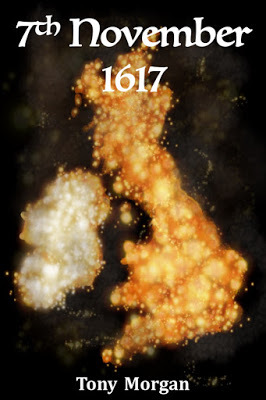 I hope this whets your appetite and you’ll read “
7th November 1617
” to find out more about Digby’s mission to Ireland, Elizabeth’s plans for the future and what happens when Parliament opens on 7th November 1617. I’d love to hear what you think.
I hope this whets your appetite and you’ll read “
7th November 1617
” to find out more about Digby’s mission to Ireland, Elizabeth’s plans for the future and what happens when Parliament opens on 7th November 1617. I’d love to hear what you think. 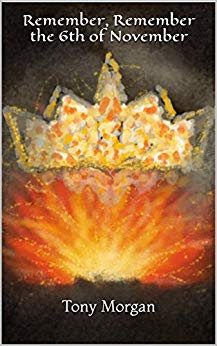
If like me, you have a fascination for bonfire night and want to know more about the Gunpowder Plot, have a look at my first novel “ Remember, Remember the 6th of November ”.
All profits from both books in 2018 are being donated to St Leonard’s Hospice in York , which provides specialist palliative care and support for people with life limiting illnesses. St Leonard’s provides great care free of charge to patients and their families but of course it’s not free to provide, so I’m really pleased to be supporting this great cause.
Tony Morgan
 Tony Morgan is a Welsh author living in Yorkshire in the UK, near to the birth place of Guy Fawkes.
Tony Morgan is a Welsh author living in Yorkshire in the UK, near to the birth place of Guy Fawkes.His books have been described as a perfect read for lovers of the works of C.J. Sansom and S. J. Parris and anyone interested in how historic events have shaped our own times.
Tony Loves to hear from readers, you can find him: Website Twitter
Published on October 03, 2018 23:00
The Coffee Pot Book Club
The Coffee Pot Book Club (formally Myths, Legends, Books, and Coffee Pots) was founded in 2015. Our goal was to create a platform that would help Historical Fiction, Historical Romance and Historical
The Coffee Pot Book Club (formally Myths, Legends, Books, and Coffee Pots) was founded in 2015. Our goal was to create a platform that would help Historical Fiction, Historical Romance and Historical Fantasy authors promote their books and find that sometimes elusive audience. The Coffee Pot Book Club soon became the place for readers to meet new authors (both traditionally published and independently) and discover their fabulous books.
...more
...more
- Mary Anne Yarde's profile
- 159 followers



